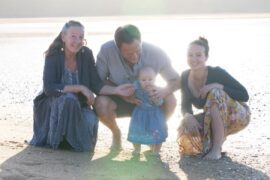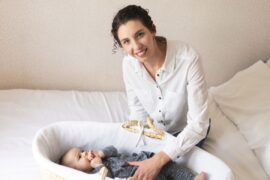Prior to the in-house portion, parents completed questionnaires regarding sleep and the struggles they have regarding settling. The in-house portion of the study took part over 6 days. On days 1-5, researchers collected saliva samples to get kids used to the process of collecting samples and children went to sleep on the same parent-defined schedule each night and did not eat or drink anything that would impact their sleep. Sleep was measured using a sleep diary and actigraphy. On day 6, researchers conducted a DLMO assessment which includes children having to give a saliva sample every 30 minutes for 6 hours, ending one hour past their average bedtimes. All of these assessments were done in dim lighting, with researchers ensuring children were in dim light for an hour prior to the first assessment and a light meter was used to ensure that children were not being exposed to light that would impact their sleep.
What did they find?
There were two elements of interest: The DLMO time and the angle of entrainment. The angle of entrainment is the time between DLMO and bedtime (not sleep time). A narrow angle of entrainment means that the bedtime was closer to the DLMO. For example, if one person’s DLMO is 7:30pm and bedtime is 7:45pm, that would be a very narrow angle of entrainment because typically sleep onset is an hour after DLMO.
In looking at the DLMO time, researchers found that the average time was 7:40pm +/- 48 minutes and this was, on average, 30 minutes prior to bedtime. In line with previous research on the relationship between DLMO and sleep time, sleep onset was on average around 30 minutes after bedtime, making it around one hour past DLMO.
Simply pushing bedtime back and letting children find their own rhythm may alleviate some of the night-time struggles parents have.
With respect to the relationship to bedtime, children with later DLMOs often struggled more as they took longer to fall asleep after lights-out and were rated by their parents as having a harder time falling asleep (settling difficulty). This relates to the other finding regarding the angle of entrainment: The more narrow the angle (i.e., the closer the bedtime to DLMO), the more struggles getting toddlers into bed at bedtime and the longer the sleep-onset latency. Interestingly, there was no relationship between DLMO and parent reports of children’s sleep overnight (maintenance and arousals).
What does this mean?
The main finding is that when parents are trying to put children to sleep too early – as evidenced by their DLMO – they also report far more settling difficulties. Notably, the problems are not the child, but rather the expectation of an early bedtime by the parent. Simply pushing bedtime back and letting children find their own rhythm may alleviate some of the night-time struggles parents have.
The researchers also call out the “limit-setting disorder” that suggests sleep disorders (especially with sleep onset) are actually limit-setting disorders with the parents. I know I have heard this many times, that the struggle is more to do with limits than anything else. This research counters that and suggests the struggles children have are due to a mismatch between their internal biology and the external environment, that is parent-set bedtimes.
For parents, the take-home message should be that if you’re struggling with your toddler’s sleep, especially sleep onset times and resistance, consider pushing bedtime back. It may make all the difference.
Reference
LeBourgeois, M. K., Wright Jr, K. P., LeBourgeois, H. B., & Jenni, O. G. (2013). Dissonance between parent‐selected bedtimes and young children’s circadian physiology influences nighttime settling difficulties. Mind, Brain, and Education, 7(4), 234-242.
Originally published here.
Tracy Cassels, PhD is the Director of Evolutionary Parenting, a science-based, attachment-oriented resource for families on a variety of parenting issues. In addition to her online resources, she offers one-on-one support to families around the world and is regularly asked to speak on a variety of issues from sleep to tantrums at conferences and in the media. She lives in Prince Edward County, Ontario, Canada with her husband and two children.










